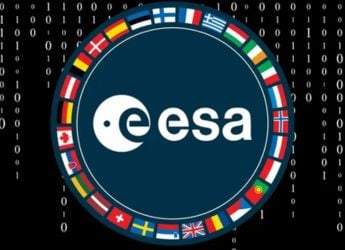- Home
- Science
- Science News
- James Webb Space Telescope Corrects Misconceptions About Sizes of Early Galaxies
James Webb Space Telescope Corrects Misconceptions About Sizes of Early Galaxies
New data from the James Webb Telescope show early galaxies are smaller than previously thought, correcting past misconceptions.

Photo Credit: NASA/JPL-Caltech/UCLA
the JWST still reveals that the early universe had more galaxies than predicted.
Recent observations from the James Webb Space Telescope (JWST) have challenged earlier assumptions about the size of galaxies in the early universe. Previously, scientists were puzzled by the apparent size of these ancient galaxies, which seemed to defy the standard model of cosmology. The JWST, with its advanced infrared capabilities, has now shed light on the matter, revealing that some of these early galaxies are not as massive as initially believed.
Understanding the Misconception
Astronomers initially found that early galaxies appeared much larger than expected, suggesting a potential crisis in our understanding of the universe's evolution. This discrepancy was attributed to a miscalculation of the galaxies' mass, partly due to the influence of black holes. Black holes, despite their name, can make galaxies seem brighter and more massive due to the intense light emitted from gas falling into them. This effect was not fully accounted for in earlier observations.
Revised Galaxy Sizes
Dr Steve Finkelstein, an astrophysicist at the University of Texas at Austin, and his team have now corrected these estimates. They focused on 261 galaxies from between 700 million and 1.5 billion years after the Big Bang. By examining the infrared light captured by the JWST, which is sensitive to cooler, lower-mass stars, the researchers were able to get a more accurate measure of these galaxies' true size.
The findings indicate that while some galaxies are indeed larger than initially thought, they do not challenge the standard model of cosmology.
Future Implications
Despite the revised figures, the JWST still reveals that the early universe had more galaxies than predicted. This discrepancy may be due to faster star formation rates in the early universe compared to today. The upcoming months will provide further data to help understand how these galaxies accumulated their stellar mass and how they formed.
Catch the latest from the Consumer Electronics Show on Gadgets 360, at our CES 2026 hub.
Related Stories
- Samsung Galaxy Unpacked 2025
- ChatGPT
- Redmi Note 14 Pro+
- iPhone 16
- Apple Vision Pro
- Oneplus 12
- OnePlus Nord CE 3 Lite 5G
- iPhone 13
- Xiaomi 14 Pro
- Oppo Find N3
- Tecno Spark Go (2023)
- Realme V30
- Best Phones Under 25000
- Samsung Galaxy S24 Series
- Cryptocurrency
- iQoo 12
- Samsung Galaxy S24 Ultra
- Giottus
- Samsung Galaxy Z Flip 5
- Apple 'Scary Fast'
- Housefull 5
- GoPro Hero 12 Black Review
- Invincible Season 2
- JioGlass
- HD Ready TV
- Laptop Under 50000
- Smartwatch Under 10000
- Latest Mobile Phones
- Compare Phones
- Tecno Spark Go 3
- iQOO Z11 Turbo
- OPPO A6c
- Samsung Galaxy A07 5G
- Vivo Y500i
- OnePlus Turbo 6V
- OnePlus Turbo 6
- Itel Zeno 20 Max
- Lenovo Yoga Slim 7x (2025)
- Lenovo Yoga Slim 7a
- Lenovo Idea Tab Plus
- Realme Pad 3
- Garmin Quatix 8 Pro
- NoiseFit Pro 6R
- Haier H5E Series
- Acerpure Nitro Z Series 100-inch QLED TV
- Asus ROG Ally
- Nintendo Switch Lite
- Haier 1.6 Ton 5 Star Inverter Split AC (HSU19G-MZAID5BN-INV)
- Haier 1.6 Ton 5 Star Inverter Split AC (HSU19G-MZAIM5BN-INV)

















